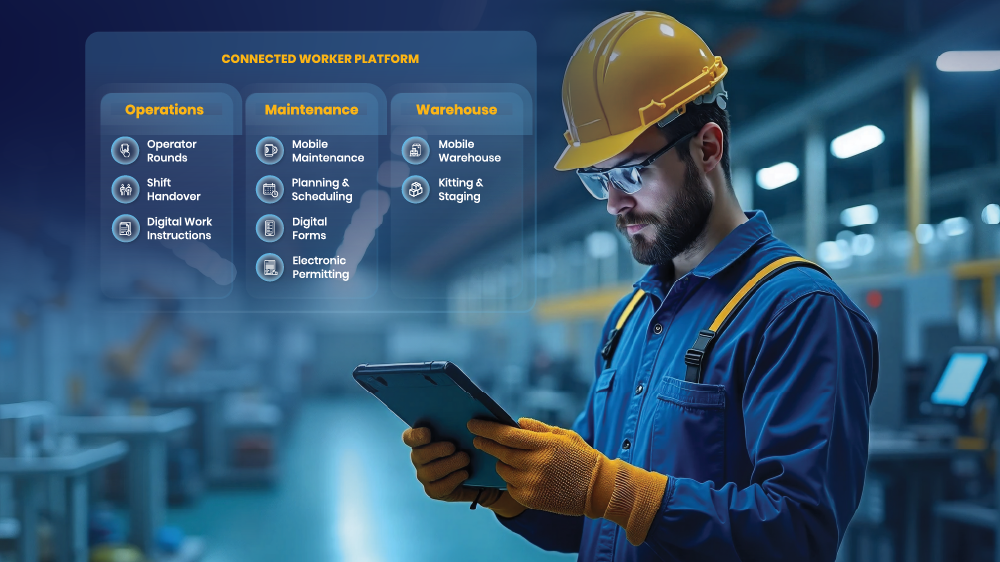Near Miss Reporting: A Critical Step Toward Workplace Safety

Workplace safety is a top priority for organizations, especially in industries like manufacturing, oil and gas, and mining, where hazardous environments increase the risk of accidents. While companies implement strict safety measures, incidents still happen. However, not every incident results in injury or damage—some are close calls, also known as near misses.
Near miss reporting is a crucial but often overlooked aspect of workplace safety. It involves recording and analyzing incidents that could have led to serious consequences but didn’t. By identifying hazards early, organizations can take corrective actions before an actual accident occurs.
This blog explores why near miss reporting is essential, common challenges organizations face, and how Innovapptive’s digital solution makes the process more efficient and effective.
Why Near Miss Reporting Matters
A near miss is an unplanned event that didn’t cause injury, damage, or loss but had the potential to do so. While these incidents may seem minor, they serve as warning signs of larger safety risks. Organizations that prioritize near miss reporting benefit in several ways:
1. Prevents Future Accidents
A single near miss can indicate an underlying issue that, if left unaddressed, could lead to a serious accident. By systematically recording and analyzing these incidents, companies can implement preventive measures to improve workplace safety.
2. Encourages a Safety-First Culture
When employees actively report near misses, it fosters a proactive safety culture. Workers become more aware of hazards and feel empowered to take action, reducing the likelihood of injuries.
3. Improves Compliance and Reduces Liability
Regulatory bodies like OSHA emphasize the importance of workplace safety. Documenting near misses helps organizations comply with safety regulations, avoid penalties, and reduce legal liabilities.
4. Enhances Operational Productivity
Accidents disrupt operations, leading to downtime, increased costs, and productivity losses. By preventing accidents through near miss reporting, organizations maintain smooth operations and minimize financial risks.
Challenges in Traditional Near Miss Reporting
Despite its importance, near miss reporting often faces barriers that limit its effectiveness:
1. Underreporting Due to Fear or Lack of Awareness
Employees may hesitate to report near misses due to fear of blame, disciplinary action, or a belief that the incident was insignificant. Organizations must create a non-punitive reporting culture to encourage participation.
2. Paper-Based and Manual Processes
Traditional reporting methods rely on paper forms or spreadsheets, making data collection inefficient and error-prone. These systems lack real-time visibility and make trend analysis difficult.
3. Lack of Standardized Reporting
Without a consistent format, near miss reports may lack crucial details, making it harder to identify patterns and implement corrective actions effectively.
4. Delayed Action on Reported Incidents
If near miss reports sit in files or emails without immediate action, hazards remain unaddressed, increasing the likelihood of future accidents. Organizations need a streamlined process to track and act on reports promptly.
Digitizing Near Miss Reporting with Innovapptive
To overcome these challenges, organizations must move away from manual processes and adopt digital solutions. Innovapptive’s AI-powered solutions help companies improve safety and prevent future accidents with a user-friendly, mobile-first platform.
1. Digital Forms & Checklists for Seamless Reporting
Employees can easily report near misses using digital forms with predefined fields. This ensures standardized reporting, capturing essential details like location, time, cause, and potential consequences. Mobile accessibility allows real-time reporting, even from remote job sites.
2. Automated Workflows for Faster Response
Once a near miss is reported, automated workflows ensure that safety managers receive instant notifications. This eliminates delays, enabling faster investigation and corrective actions.
3. AI-Driven Analytics to Identify Trends
Innovapptive’s advanced analytics feature aggregates data from near miss reports, helping EHS managers identify recurring hazards and high-risk areas. Organizations can use these insights to implement preventive measures before incidents escalate.
4. Integration with Existing Safety Systems
The platform seamlessly integrates with existing EHS and operational systems, ensuring a centralized approach to workplace safety. Organizations can track incidents, corrective actions, and compliance status in one place.
5. Fostering a Strong Safety Culture
A digital near miss reporting system makes it easy for employees to participate in safety initiatives. With a user-friendly mobile app and anonymous reporting options, companies can encourage open communication and proactive hazard identification.
Take Control of Workplace Safety Today
Organizations that take near miss reporting seriously experience fewer accidents, lower operational disruptions, and improved compliance. By digitizing the process with Innovapptive, companies can eliminate manual inefficiencies, gain real-time insights, and create a safer work environment.
Ready to improve workplace safety and productivity? Book a free demo today to see how Innovapptive’s AI-powered solutions can help your organization prevent accidents before they happen.

See It In Action
Schedule a personalized demo to see how our solutions can help your business thrive.
- 29-09-2025
Your Ultimate Guide to Connected Worker
In the rapidly evolving industrial landscape, maximizing plant efficiency and ensuring optimal...
- 20-08-2025
Building the future of Industrial Operations with Innovapptive and AWS
Most manufacturers have already gone digital. Yet business outcomes haven’t moved in step. Many...
- 22-04-2025
The $3.6B Unlock: Solving the Chemical Industry’s Labor Crisis and EBITDA Pressure in One Move
“Constraints don’t slow innovation—they force it.”


